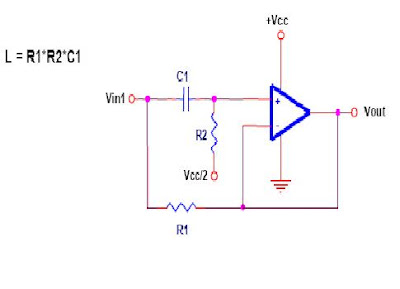
This circuit in the figure reverses the operation of a capacitor, thus making a simulated inductor. An inductor resists any change in its current, so when a dc voltage is applied to an inductance, the current rises slowly, and the voltage falls as the external resistance becomes more significant.
An inductor passes low frequencies more readily than high frequencies, the opposite of a capacitor. An ideal inductor has zero resistance. It passes dc without limitation, but it has infinite impedance at infinite frequency.
If a dc voltage is suddenly applied to the inverting input through resistor R1, the op amp ignores the sudden load because the change is also coupled directly to the non-inverting input via C1. The op amp represents high impedance, just as an inductor does.
As C1 charges through R2, the voltage across R2 falls, so the op-amp draws current from the input through R1. This continues as the capacitor charges, and eventually the op-amp has an input and output close to virtual ground (Vcc/2).
When C1 is fully charged, resistor R1 limits the current flow, and this appears as a series resistance within the simulated inductor. This series resistance limits the Q of the inductor. Real inductors generally have much less resistance than the simulated variety.
There are some limitations of a simulated inductor:
· One end of the inductor is connected to virtual ground.
· The simulated inductor cannot be made with high Q, due to the series resistor R1.
· It does not have the same energy storage as a real inductor. The collapse of the magnetic field in a real inductor causes large voltage spikes of opposite polarity. The simulated inductor is limited to the voltage swing of the op amp, so the fly back pulse is limited to the voltage swing.
